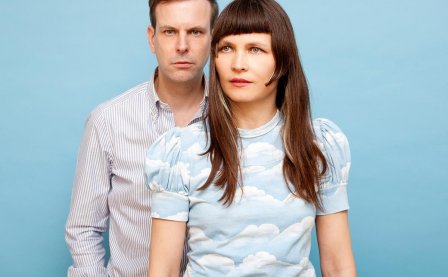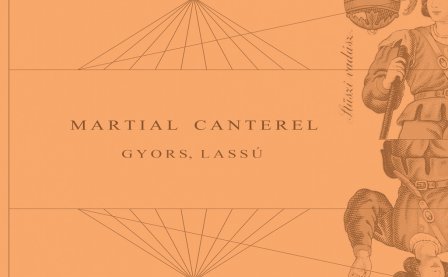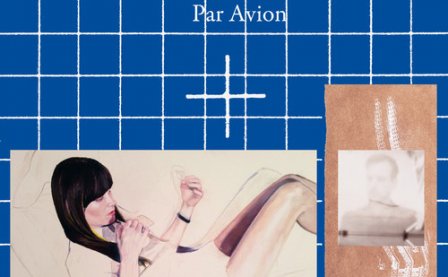Xeno & Oaklander are known for making chilly, serious synthesizer music. So much so that they’re often saddled with the “coldwave” label, in the tradition of acts like Asylum Party. True, their uncompromising vintage analog dynamic does leave the listener with an often intimidating sense of refinement, but upon closer inspection, the nice duo behind these scary electric machines comes from a deep-seated single-mindedness and commitment to a sense of sonic purity.
The aforementioned “nice duo,” Sean McBride and Liz Wendelbo, continued this purity pursuit on their most recent album, Par Avion. Wendelbo sat down with Tiny Mix Tapes to discuss Xeno & Oaklander’s recordings, live show, and how they see supporting boutique synthesizer manufacturers as a point of national pride.
Can you tell me a little bit about the state of the group right now?
Xeno & Oaklander are taking the album on the road. We’re touring Europe in October and November this year. We’re bringing our analog gear with us, so there’s an impressive array of synths and cables on stage. I’ve also been shooting a lot Super 8 film footage over the last few years on our travels and I am projecting that while we play: lots of exotic textures, flowers, arid landscapes, and frozen vistas too.
I’ve read Xeno & Oaklander record everything in one take without post-processing. Was this true on Par Avion?
We enjoy recording in one take, so we stayed true to that process on Par Avion. The difference perhaps with previous albums is that we’ve mixed and mastered the album on amazing analog gear we hadn’t had access to before — an SSL [Solid State Logic] board at [recording studio] DNA and amazing analog outboard gear at Clubhouse. [We worked] with really great engineers and producers such as Chris Coady, Rick Kwan, and Heba Kadry. It was truly a team effort that was driven by passion for analog on everyone’s behalf.
Why do you prefer analog synths over other kinds of instruments?
Analog synths are very pleasurable to play. Not only [because of] their warm sound, but also the materials they are made of, their feel. They are often made of wood, metal and leather, which in combination with early industrial plastics make them great pieces of design as well as incredible instruments. Incredible in that the possibilities are endless; they never cease to inspire.
Can I ask how the two of you met and decided to work together?
Serendipity. We met in 2003 in Williamsburg, in a warehouse building on the waterfront. Sean lived there and had his studio there too. We immediately started making music and released out first CD-R Vigils in 2004.
Analog synths are very pleasurable to play… They are often made of wood, metal and leather, which in combination with early industrial plastics make them great pieces of design as well as incredible instruments.
Electronic music can often be a solitary activity. What do you gain by working together?
A dynamic sound is important to us and so is dynamic energy within the band, so being a duo creates that: energy! You can hear it in Par Avion. There is contrast there; that’s poetry.
I’ve seen some videos of your working process, such as Sean’s scenes from the electronic music documentary I Dream of Wires and, if I’m recognizing the units correctly, it appears the majority of your pieces don’t store presets or save their settings in any way. I was wondering how that might affect your process live and in the studio.
It is true that the synths dictate the moment, as it were. Once the patch is there, we have to record. This also means that you don’t really get the same sound twice, which makes our live concerts exciting — they are always different and never cease to surprise us. These synths provide constant inspiration and keep us on our toes. It’s a way of keeping an edge.
I was curious how you both feel about the state of analog synths today. There seems to be an industry resurgence in analog sound and I’ve seen a lot of new modular units on the market.
Sean is a big fan of Eurorack modules — these are compact, analog and made locally in the U.S. by boutique workshops. Local synth stores carry them here in New York such as Control and Me Me Antenna. We like to support our local community and we feel that it’s important to be part of the synth resurgence in the U.S. by using gear that is made here.
Your music often strikes me as European-sounding, although I’m not sure why. Maybe because it invokes some feelings of 80s-era German and English sounds. Do you feel there’s any difference these days between “American” sounds, “European” sounds, or styles that might be characteristic of other countries?
Xeno & Oaklander are both American and European: Sean is from Maryland, and I am French and Norwegian. We are both based in Brooklyn. So from the get go, we embody both continents. We are also both fascinated with the history of minimal electronics in the US and Europe; this curiosity is important. It’s good for us to know that Xeno & Oaklander is part of something larger than the immediate present in contemporary music — and this is part of Par Avion’s message. With this album we are sending mementos from the past, that are listened to today, to be cherished in the future by synth generations to come. We’re romantics!
More about: Xeno & Oaklander



